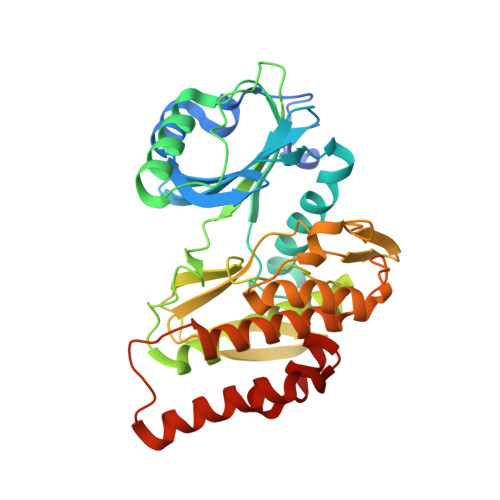Halogen-Aromatic pi Interactions Modulate Inhibitor Residence Times.
Heroven, C., Georgi, V., Ganotra, G.K., Brennan, P., Wolfreys, F., Wade, R.C., Fernandez-Montalvan, A.E., Chaikuad, A., Knapp, S.(2018) Angew Chem Int Ed Engl 57: 7220-7224
- PubMed: 29601130
- DOI: https://doi.org/10.1002/anie.201801666
- Primary Citation of Related Structures:
6G33, 6G34, 6G35, 6G36, 6G37, 6G38, 6G39, 6G3A - PubMed Abstract:
Prolonged drug residence times may result in longer-lasting drug efficacy, improved pharmacodynamic properties, and "kinetic selectivity" over off-targets with high drug dissociation rates. However, few strategies have been elaborated to rationally modulate drug residence time and thereby to integrate this key property into the drug development process. Herein, we show that the interaction between a halogen moiety on an inhibitor and an aromatic residue in the target protein can significantly increase inhibitor residence time. By using the interaction of the serine/threonine kinase haspin with 5-iodotubercidin (5-iTU) derivatives as a model for an archetypal active-state (type?I) kinase-inhibitor binding mode, we demonstrate that inhibitor residence times markedly increase with the size and polarizability of the halogen atom. The halogen-aromatic ¦Đ?interactions in the haspin-inhibitor complexes were characterized by means of kinetic, thermodynamic, and structural measurements along with binding-energy calculations.
Organizational Affiliation:
Nuffield Department of Clinical Medicine, Structural Genomics Consortium, University of Oxford, Oxford, OX3 7DQ, UK.






















